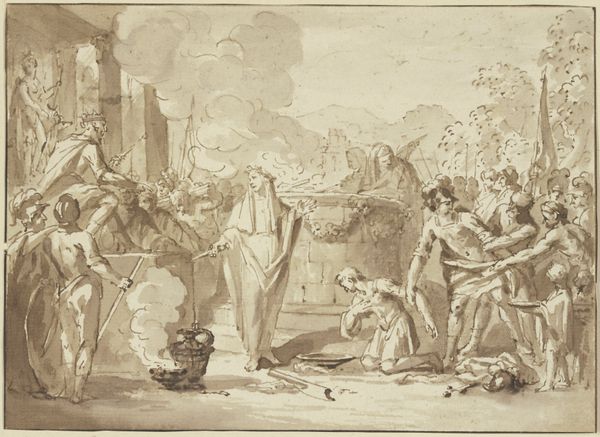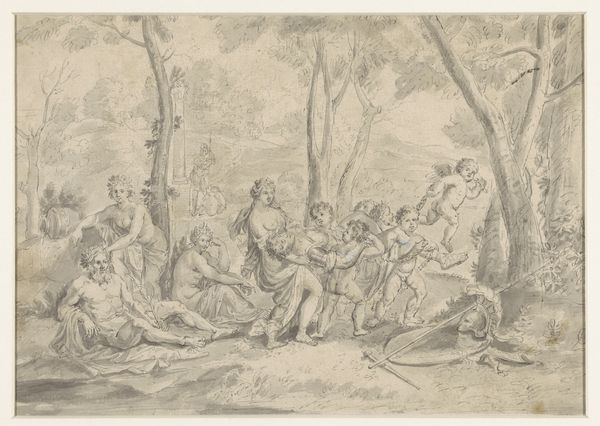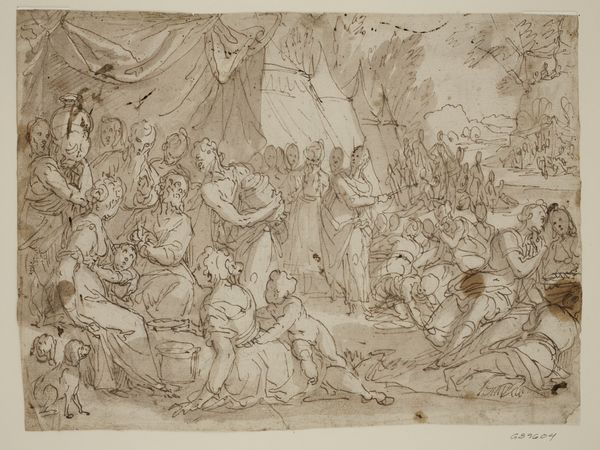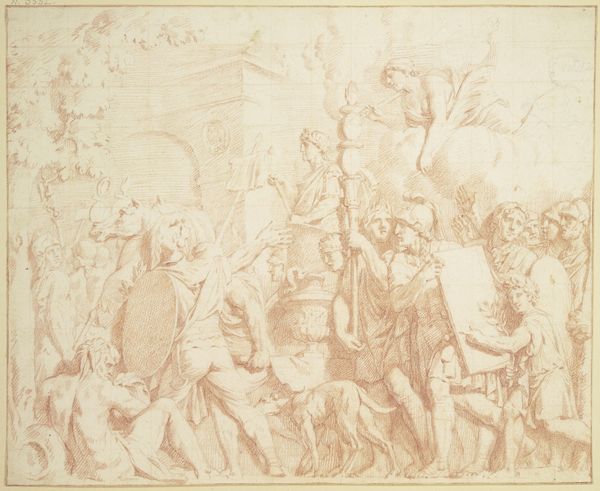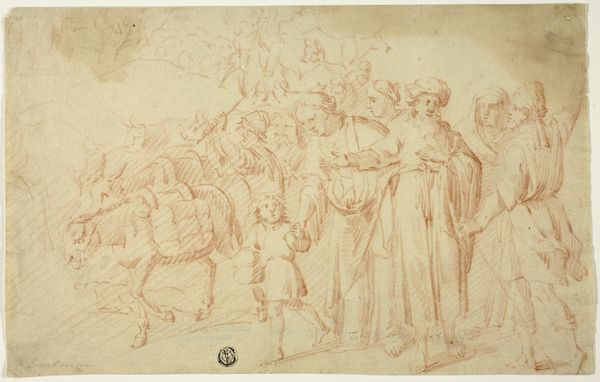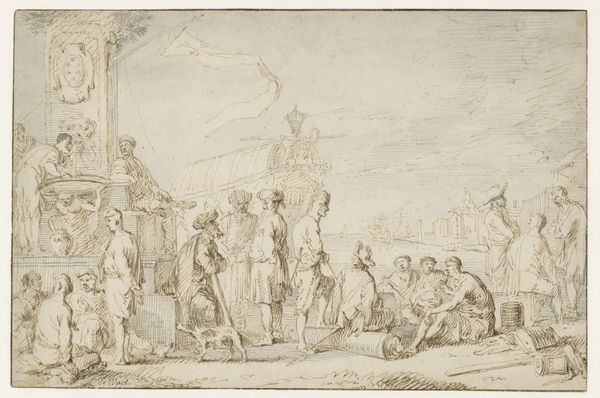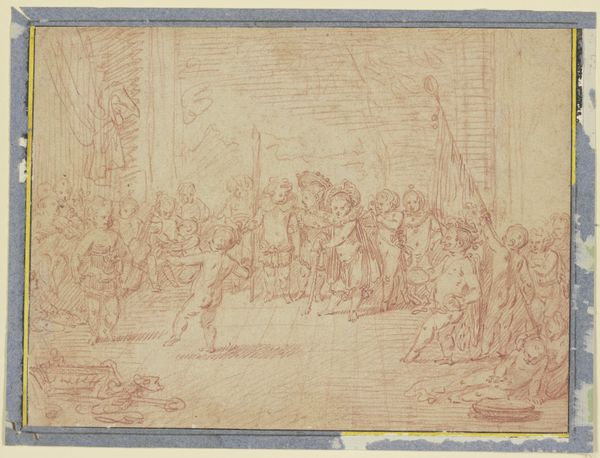
Mercury Delivers the Infant Bacchus to the Nymphs 1784 - 1795
0:00
0:00
drawing, print, etching
#
drawing
#
neoclacissism
#
allegory
# print
#
etching
#
landscape
#
etching
#
figuration
#
history-painting
Dimensions: Sheet: 19 9/16 × 25 1/4 in. (49.7 × 64.1 cm)
Copyright: Public Domain
Editor: This is "Mercury Delivers the Infant Bacchus to the Nymphs" by Bénigne Gagneraux, made between 1784 and 1795. It's an etching, quite detailed. The figures almost seem to float in the landscape. How do you see this piece? Curator: It’s interesting to consider this work as a material object, focusing on the "how" rather than just the "what." An etching inherently involves a process of reproduction. Think about the labor involved in creating the plate, the repetitive act of printing… How does that mass-producible aspect alter the value of the image itself? Editor: So, less about the classical story and more about the actual making of it? Curator: Precisely. Consider the social context. Who would have purchased these prints? What did it mean to consume imagery in this way, in a pre-digital world? Was it a means of spreading neoclassical ideals, or simply a reflection of the tastes of a rising bourgeois class with disposable income eager for aesthetic engagement? Editor: I never thought about it that way, about the consumption of the print. It’s a tangible thing, almost a commodity, reproducing a classical scene. Curator: Right, it becomes less about the singular artistic genius, and more about the network of labor and distribution. How does this affect the art market then? Did it democratize access to art or create another hierarchy based on who can afford to purchase an original print versus an even later reproduction? Editor: That’s fascinating. Thinking about the art in terms of labor, material and distribution opens up so many questions about its social meaning. Curator: Indeed. It's about unpacking the layers of production and consumption that traditional art history often overlooks. Considering not just what's depicted, but how it came to be, and who it reached.
Comments
No comments
Be the first to comment and join the conversation on the ultimate creative platform.




